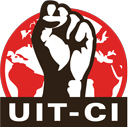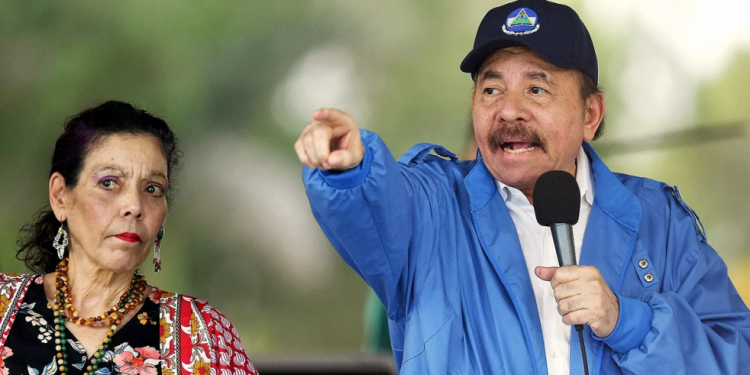By Miguel Sorans, leader of Izquierda Socialista/IWU-FI, former member of the Simon Bolivar Brigade
President Ortega has made a repressive raid against political figures who want to run for president for the opposition and dissident sectors of Sandinismo, many of them historic leaders of the 1979 revolution that overthrew the dictator Somoza.
Ortega’s argument is the fact that they are “agents of the American imperialism,” who would like to “return to an “April 2018”. In “April 2018” there was a popular rebellion of working, peasant, unemployed youth and women, confronting a pension reform advised by the IMF to Daniel Ortega. The result was the fall of this reform, but also over 300 dead because of the criminal repression of Ortega, who justified it in a supposed “coup” with “North American interference”. Now he repeats the same lie.
Ortega represses again because he is afraid of losing the November elections. With the dissident Sandinista leaders, we can have differences of approach from the revolutionary left, but what is not acceptable is to define them as “agents of imperialism”.
Ortega imprisoned Dora Maria Tellez, who is popularly considered a heroine of the 1979 revolution. She is remembered because in 1978 she led, as “commander two”, the takeover of the National Palace in Managua, accompanying commander “Zero” Eden Pastora. Later, Dora Tellez led the insurrection in Leon and was deputy health minister in the Sandinista government. He also imprisoned Hugo Torres, another guerrilla hero of the revolution. In 1974, Hugo Torres led a takeover of a property that was used to negotiate no other than the release of Daniel Ortega, who had been in prison for seven years. Torres was a general in the army after the takeover. Luis Carrion, one of the 9 commanders of the revolution, had to flee the country. All are members of the former Sandinista Renovation Movement (MRS).
They also arrested Cristiana Chamorro, a pre-candidate for president, who is Violeta Chamorro’s daughter, together with other candidates who are bourgeois pro-American dissidents. But they are not detained for planning a coup, since the military and the police are under Ortega’s control, but because they can win the elections.
From the left, we must repudiate this new repression. This is an important debate because there are still sectors of the world left and centre-left that remain silent, or that continue to defend Ortega as if he were a socialist or an anti-imperialist government. When his government is a capitalist dictatorship and a travesty of “anti-imperialism”.
Stalin’s methods of defending a capitalist Nicaragua
Daniel Ortega and his government fit the definition of bourgeois Stalinist. Ortega uses the same methods of slander, lies and defamation that Joseph Stalin, leading the bureaucracy of the former USSR, used to persecute and assassinate his political enemies.
Accusing them of being “agents of imperialism” or “traitors” of the socialist revolution, starting with Leon Trotsky and all the revolutionaries and continuing with all the left opposition and intellectuals who fought against him.
It was Nahuel Moreno who elaborated this definition of “bourgeois Stalinist regimes”, studying the anti-colonial triumphs of the guerrillas in Angola and Mozambique (1). He was referring to governments headed by a party or a movement which, claiming to be “revolutionary” or “Marxist”, rule in a dictatorial manner not to move towards socialism. Instead of expropriating the bourgeoisie, they govern for the bourgeoisie and the multinationals.
That is what Ortega does, he governs with the methods of Stalinism, with false “anti-imperialist” language, to benefit the big economic groups and starve his people, maintaining capitalism.
Ortega’s pact with big business and the Church
One only has to look at Ortega’s relations to confirm that this is a capitalist dictatorship. In one of the most miserable countries in the world, with the greatest inequality, the country has 3 Nicaraguan billionaires on the Forbes magazine list. There is the group of Carlos Pellas, who is a big sugar oligarch, who has interests in banking, tourism and car dealerships, etc. The other is the Pro America group, headed by Ramiro Ortiz, with a sound investment in the country’s financial system, which has a presence in 9 countries. The other is Roberto Zamora’s group, with large financial interests. Ortega regained power in 2006, after agreeing with the right-wing former president Arnoldo Aleman, with these economic groups, which make up the Superior Council of Private Enterprise COSEP, and with the Church. That is why Ortega annulled the right to therapeutic abortion. Nicaragua is the poorest country after Haiti with 79.9 per cent of the population living on 3 dollars a day, 27 per cent malnutrition and 1.7 per cent of its almost 6 million inhabitants do not have access to electricity. (2)
Return to the banners of the 1979 revolution
The social and repressive disaster that the Ortega-Rosa Murillo government led to is part of the failures of all the governments of the false “socialism of the 21st century” or “national and popular” of Chavez and Maduro, of
Lula-Dilma, of Evo Morales or the Kirchnerist Peronism.
The root cause of the failure of yesterday’s and today’s Sandinismo is in its origins. After the triumph of the 1979 revolution, they did not want to break with the bourgeoisie and imperialism. They did not want to move towards socialism, with the ill-fated advice of Fidel Castro and the leadership of the Cuban CP.
That is why they expelled the Simon Bolivar Brigade in August 1979 (3). It was Ortega’s first repression. Our Trotskyist current was promoting another policy, seeking to push forward with measures to break with the bourgeoisie and for socialism. Strikingly, we were the first to denounce that Violeta Chamorro, who was then a member of the government with Ortega, was conservative and pro-American.
But now, from the IWU-FI, we do not agree with Cristina Chamorro’s detention or the other political prisoners. We do not believe that this is the way out for the Nicaraguan people. We have to build a real left in Nicaragua.
There is no other way than to take up again the rebellion of April 2018 for all these democratic and social demands, to put an end to this dictatorship and to return to the banners for which the revolution of 1979 was made, in the perspective of a workers’ and socialist solution to the crisis in Nicaragua.
-
See Nahuel Moreno. The revolutions of the 20th century. www.nahuelmoremo.org
-
UN Human Development Index.
-
The Simon Bolivar Brigade of combatants fought on the Southern Front, with many wounded and three killed in action. On the Atlantic Coast, the brigade, in unity with an independent Sandinista commando, took the city of Bluefields. See the book El Socialista edition.













